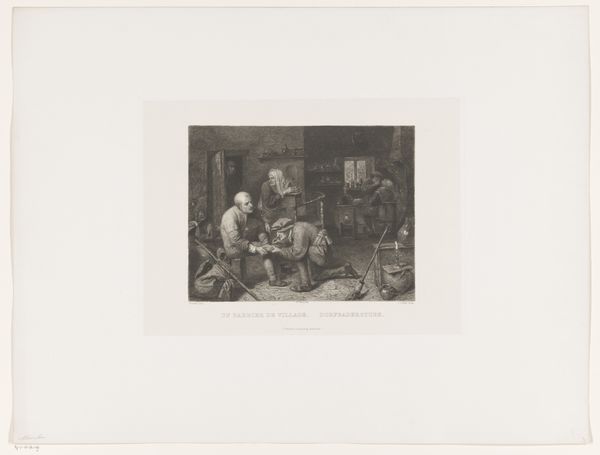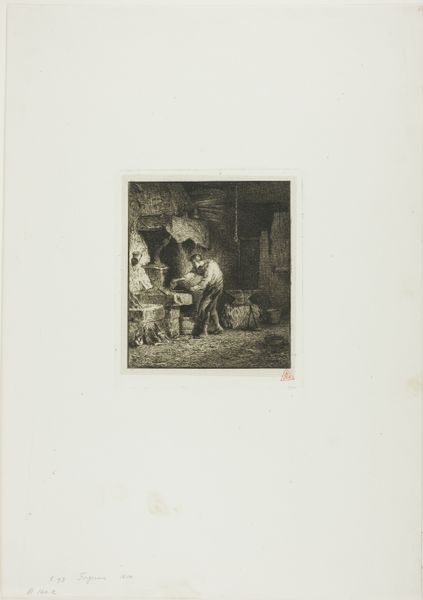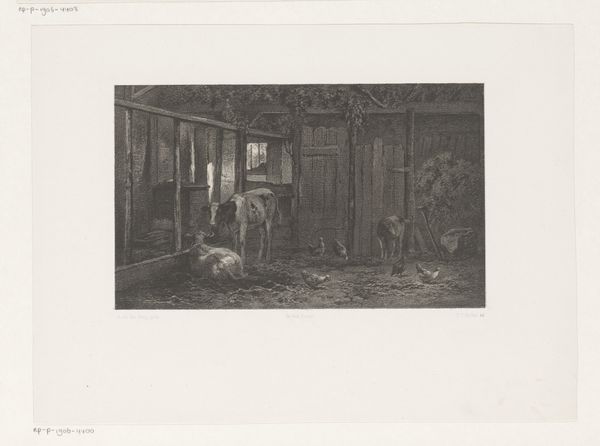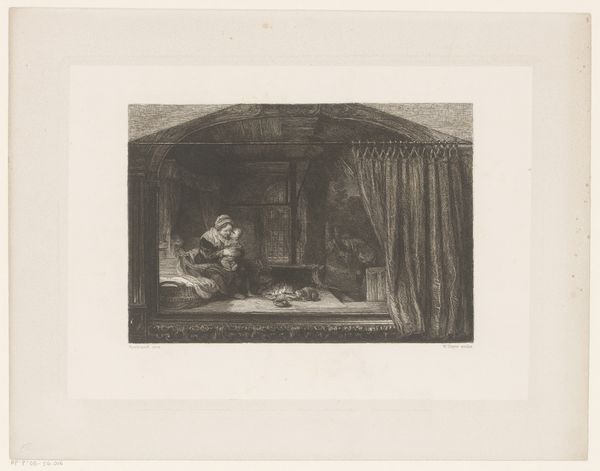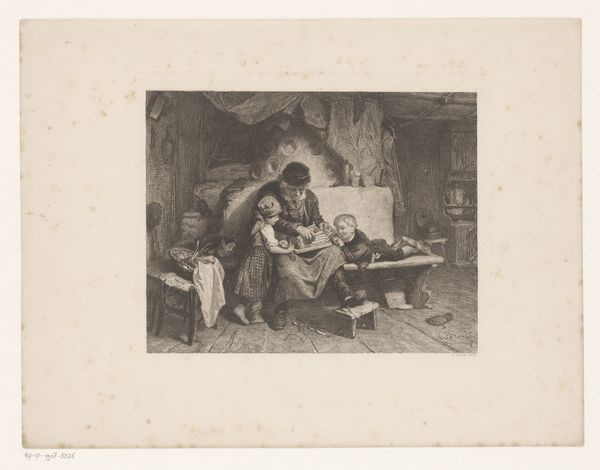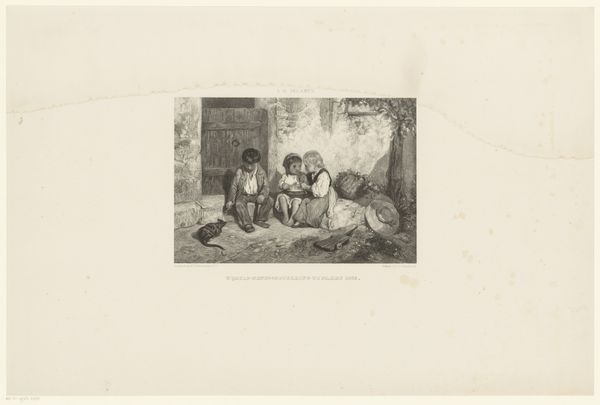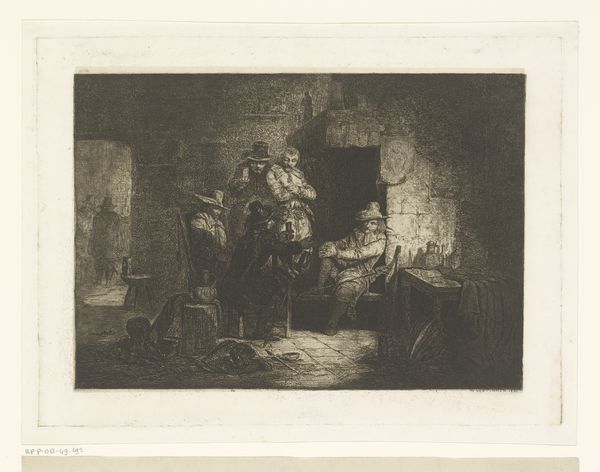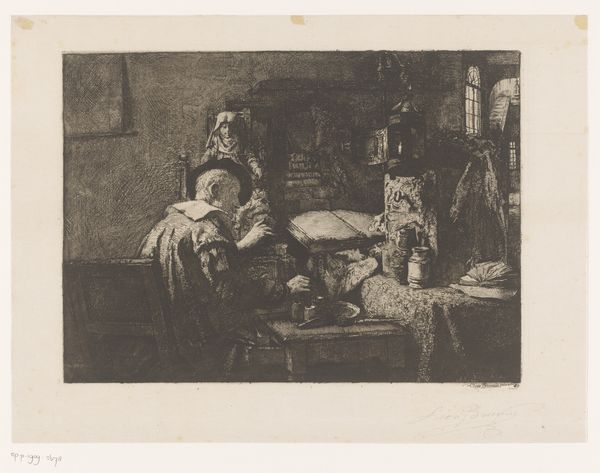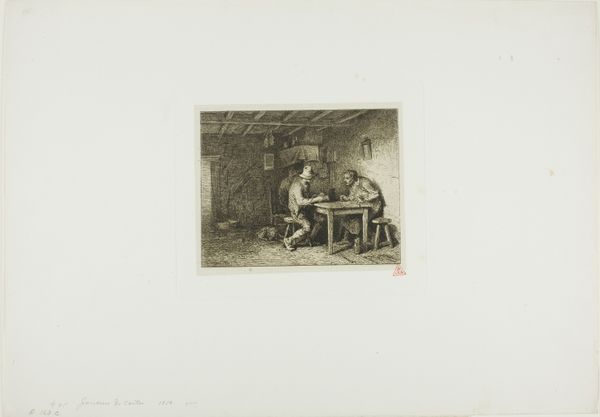
drawing, print, pencil
#
portrait
#
pencil drawn
#
drawing
# print
#
pencil sketch
#
old engraving style
#
pencil
#
pencil work
#
genre-painting
#
history-painting
#
academic-art
#
watercolor
#
realism
Dimensions: height 273 mm, width 368 mm
Copyright: Rijks Museum: Open Domain
Curator: Herman Frederik Carel ten Kate created this drawing, titled "Scholar in a Study," sometime between 1832 and 1891. What are your first impressions? Editor: Immediately, I’m struck by a sense of hushed industry. The composition feels weighted, literally by the piles of books, but also metaphorically with the weight of learning and intellectual labor. Curator: Interesting. Ten Kate was known for genre and history paintings, and here we see elements of both. It's a print, made with pencil, that presents a detailed, intimate scene. Consider the socio-economic conditions that afforded this scholar the space and time for such study. Editor: The imagery really pulls me in. Look at that globe! It represents a world of knowledge and exploration, literally at the scholar's fingertips. What cultural narratives are being reinforced by depicting intellectualism this way? What does the placement of that globe signify in this arrangement? Curator: We must consider the means by which such imagery circulated. As a print, it's reproducible, meant for wider distribution. It underscores the rising availability of knowledge – even if selectively so – through printed materials. Look closely at the depiction of cloth, too; notice the artist's skill in capturing its textures. Editor: The soft hatching of the pencil work enhances this feeling. The scene has this subtle drama about it: he’s positioned at a threshold to another world. I would even suggest the slightly darkened room plays into themes of illumination or seeking understanding. Curator: Indeed. Also notice the clear emphasis on capturing specific details in the books, the scholar’s garb, the architectural features. Ten Kate’s attention to craft highlights the very labor of rendering the scene, connecting it to a larger market of printed images. Editor: For me, this piece becomes less about documentation and more about capturing and framing the essence of academic life. The scene isn’t simply presented, it’s _symbolic_ in ways that subtly shapes perceptions of scholarly activity, linking study with access to this whole visual legacy. Curator: Seeing how you link imagery with its potential to mold concepts of knowledge really adds to my appreciation of the work. I began looking for the conditions of production, while you brought out the layers of cultural significance imbued within. Editor: Precisely! Examining material conditions helps anchor the work within specific social practices and systems, but also, by recognizing its embedded iconography, we begin to see what values society has inscribed within an image.
Comments
No comments
Be the first to comment and join the conversation on the ultimate creative platform.


